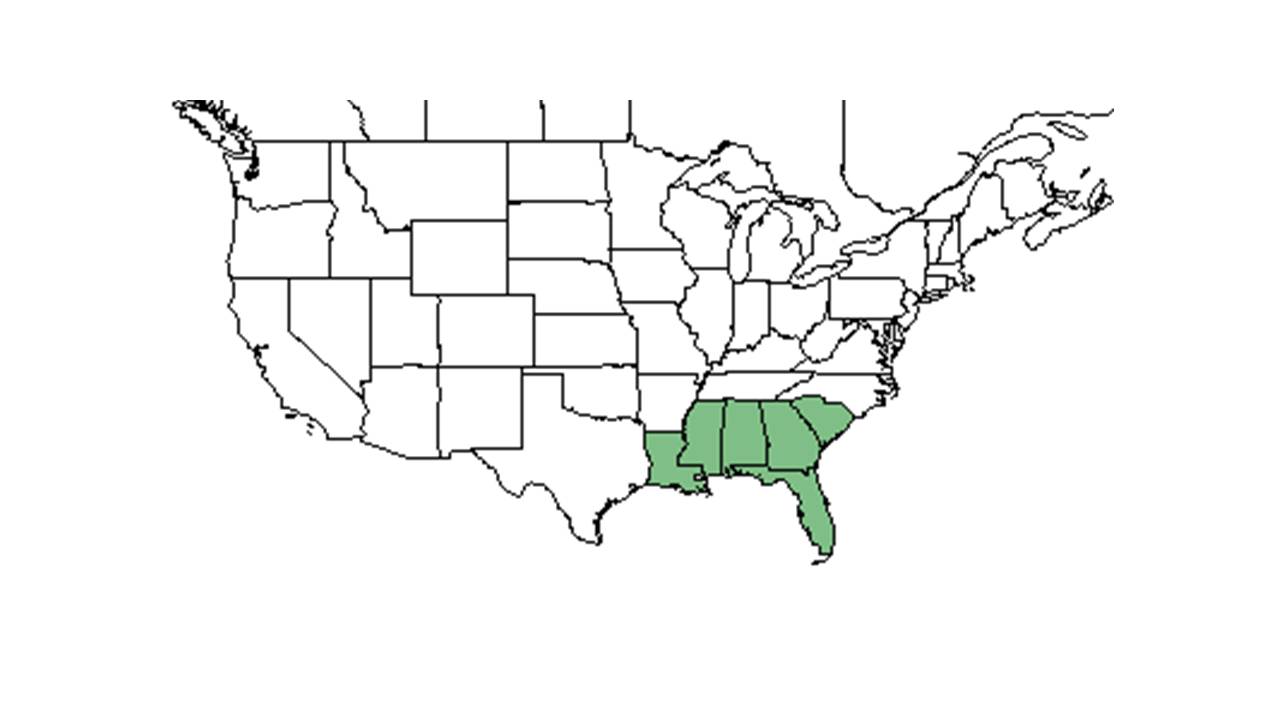Difference between revisions of "Elephantopus elatus"
(→References and notes) |
(→Description) |
||
| Line 21: | Line 21: | ||
Common Name: Tall elephantsfoot | Common Name: Tall elephantsfoot | ||
| − | + | It is usuaslly a single plant, up to 1m tall, stems are rigid and brittle, with a pappus (modified calyx), flowers are lavender to white, and achenes are 3.5-4m (FSU Herbarium). | |
==Distribution== | ==Distribution== | ||
Revision as of 14:45, 13 July 2015
| Elephantopus elatus | |
|---|---|
Error creating thumbnail: Unable to save thumbnail to destination
| |
| Scientific classification | |
| Kingdom: | Plantae |
| Division: | Magnoliophyta - Flowering plants |
| Class: | Magnoliopsida – Dicotyledons |
| Order: | Asterales |
| Family: | Asteraceae ⁄ Compositae |
| Genus: | Elephantopus |
| Species: | E. elatus |
| Binomial name | |
| Elephantopus elatus Bertol. | |

| |
| Natural range of Elephantopus elatus from USDA NRCS Plants Database. | |
Contents
[hide]Description
Common Name: Tall elephantsfoot
It is usuaslly a single plant, up to 1m tall, stems are rigid and brittle, with a pappus (modified calyx), flowers are lavender to white, and achenes are 3.5-4m (FSU Herbarium).
Distribution
Ecology
Habitat
Is found in well drained, open pinelands, Longleaf pine-wiregrass sand ridges, slash pine flatwoods, Longleaf pine savannas, pine-oak woodlands, pine-palmettos woodlands, oak hammock woodland, edges of river banks, sandhills, and edges of upland mixed forest with exposed limestone (FSU Herbarium). Is also found in human disturbed areas that have been logged or clear cut (like flatwoods), along the roadsides, and in roadside depressions (FSU Herbarium). Requires high levels of light in open areas (FSU Herbarium). Is associated with loam soil, sandy loam soil, limestone, and clay soil types (FSU Herbarium). It prefers dry soil to wetter soil.[1] It is found in dry flatwoods and sandhill communities.[1] Found in sandhills that were consistently higher densities of sandhill plants with showy flowers and higher species richness of sandhill species in the burn than control patches. The most notable difference in the vigor of the flowering response occurred 1 month after the burns and in the fall flowering censuses.[2]
Phenology
Has been observed flowering from July to November (FSU Herbarium).
Seed dispersal
Seed bank and germination
Fire ecology
It responded positively to late winter annual and biennial burns.[1] Is abundant in area where there was a winter burn, observed in annually burned savannas, Longleaf pinelands, and in pine-oak woodlands (FSU Herbarium).
Pollination
Mark Deyrup at Archbold Biological Station observed these Hymenoptera species on Elephantopus elatus
Halictidae: Augochlora pura
Halictidae: Augochlorella aurata
Halictidae: Augochloropsis metallica
Leucospididae: Leucospis slossonae
Megachilidae: Anthidiellum perplexum
Megachilidae: Megachile albitarsis
Megachilidae: Megachile brevis pseudobrevis
Megachilidae: Megachile xylocopoides
Sphecidae: Isodontia exornata
Vespidae: Pachodynerus erynnis
Vespidae: Stenodynerus fundatiformis
Use by animals
These bees, Azcgochlora pura, Augochlorella aurata, Azegochloropsis metallica, Anthidiellum perplexurn, Megachile albitarsis, M. brevis pseudobrevis, and M. xylocopoides, were found on E. elatus.[3]
Diseases and parasites
Conservation and Management
Cultivation and restoration
Photo Gallery
References and notes
Florida State University Robert K. Godfrey Herbarium database. URL: http://herbarium.bio.fsu.edu. Last accessed: June 2014.
Collectors: R.K. Godfrey, R. D. Houk, R. L. Lazor, John Lazor, K. E. Blum, J. Wooten, James D. Ray, Jr., O. Lakela, A. F. Clewell, J. P. Gillespie, R. E. Perdue, Cecil R Slaughter, Loran C. Anderson, Brenda Herring, Don Herring, Gary R. Knight, Robert Kral, D. B. Ward, T. Myint, Richard S. Mitchell, E. L. Tyson, S. S. Ward, R. R. Smith, A. A. Will, Paul O. Schallert, L. Baltzell, Paul L. Redfearn, Jr., R. Komarek, MacClendons, G. Wilder, and Billie Bailey.
States and Counties: Florida: Bay, Calhoun, Citrus, Clay, Columbia, Dixie, Duval, Escambia, Flagler, Franklin, Gadsden, Hernando, Highlands, Hillsborough, Indian River, Jackson, Jefferson, Leon, Liberty, Marion, Okaloosa, Okeechobee, Orange, Osceola, Pasco, Polk, Putnam, Sarasota, Seminole, St Johns, Taylor, Volusia, Wakulla, and Walton. Georgia: Grady and Thomas.
- ↑ Jump up to: 1.0 1.1 1.2 Glitzenstein, J. S., D. R. Streng, et al. (2003). "Fire frequency effects on longleaf pine (Pinus palustris, P.Miller) vegetation in South Carolina and northeast Florida, USA." Natural Areas Journal 23: 22-37.
- Jump up ↑ Heuberger, K. A. and F. E. Putz (2003). "Fire in the suburbs: ecological impacts of prescribed fire in small remnants of longleaf pine (Pinus palustris) sandhill." Restoration Ecology 11: 72-81.
- Jump up ↑ Deyrup, M. J. E., and Beth Norden (2002). "The diversity and floral hosts of bees at the Archbold Biological Station, Florida (Hymenoptera: Apoidea)." Insecta mundi 16(1-3).